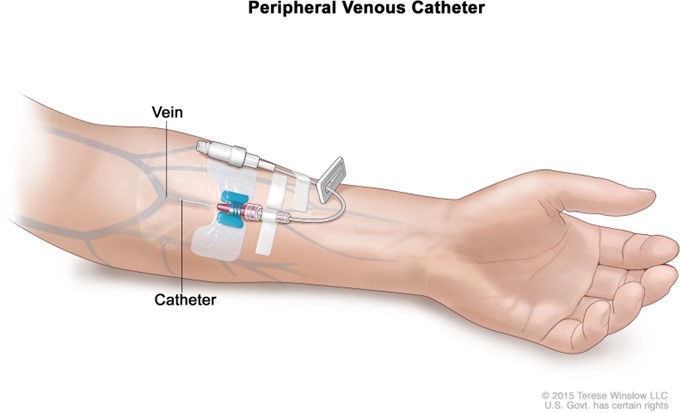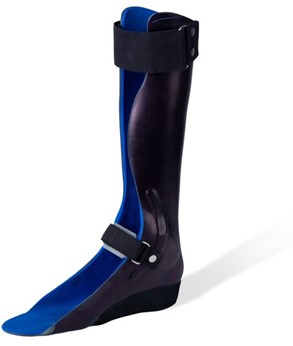A nurse is preparing to insert a peripheral IV catheter into a client's arm. Which of the following actions should the nurse take to help dilate the vein?
Dangle the client's arm over the edge of the bed.
Stroke the skin near the vein in an upward direction.
Instruct the client to flex their arm with the hand open.
Apply a cool compress to the vein for 10 min.
The Correct Answer is A
The correct answer is that the nurse should dangle the client's arm over the edge of the bed to help dilate the vein. This technique uses gravity to increase blood flow to the arm and dilate the veins, making it easier to insert a peripheral IV catheter.
Options b, c and d are not effective techniques for dilating a vein for IV insertion. Stroking the skin near the vein in an upward direction, instructing the client to flex their arm with the hand open and applying a cool compress to the vein for 10 min are not effective methods for dilating a vein.

Nursing Test Bank
Naxlex Comprehensive Predictor Exams
Related Questions
Correct Answer is C
Explanation
a) This response may seem dismissive of the partner’s immediate concern about the DNR order and does not directly address their request.
b) While this response attempts to establish a connection through shared experience, it may shift the focus away from the partner's feelings and can come off as self-centered. It may also invalidate the partner's unique experience of loss.
c) This response acknowledges the emotional distress and difficulty the partner is experiencing while validating their feelings. It shows empathy and understanding, which can help build rapport and encourage further communication about the situation.
d)This response is inappropriate because it does not respect the existing DNR order and could create confusion or frustration for the partner. Additionally, changing a DNR order requires specific processes and discussions with the healthcare team.
Correct Answer is C
Explanation
An ankle-foot orthotic can help prevent a plantar flexion contracture of the affected extremity in a client who has right-sided paralysis following a cerebrovascular accident. This device can help maintain the foot and ankle in a neutral position and prevent the development of a contracture.
a. A sequential compression device is used to prevent deep vein thrombosis and is not specifically designed to prevent contractures.
b. An abduction splint is used to maintain the hip in a neutral position and is not specifically designed to prevent contractures of the foot and ankle.
d. A continuous passive motion machine is used to promote joint mobility and is not specifically designed to prevent contractures of the foot and ankle.

Whether you are a student looking to ace your exams or a practicing nurse seeking to enhance your expertise , our nursing education contents will empower you with the confidence and competence to make a difference in the lives of patients and become a respected leader in the healthcare field.
Visit Naxlex, invest in your future and unlock endless possibilities with our unparalleled nursing education contents today
Report Wrong Answer on the Current Question
Do you disagree with the answer? If yes, what is your expected answer? Explain.
Kindly be descriptive with the issue you are facing.
